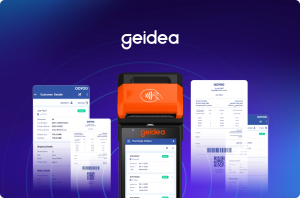يناير 1
Easy entries
0 comments

خدمة مُصممة لمساعدة الشركات على تسريع عملية تحصيل الفواتير، وتقليل الديون المتأخرة.

خدمة مُصممة لدعم نمو الشركات من خلال توفير حلول تمويلية مرنة.

اجعل معاملاتك المالية أسهل من خلال التكامل مع جيديا، حيث يمكنك معالجة المدفوعات وإدارة التدفقات النقدية بسلاسة.

حلول متكاملة للتغلب على تحديات قطاع التجزئة

حلول متكاملة للتغلب على تحديات قطاع الإنتاج والتصنيع

حلول متكاملة للتغلب على تحديات قطاع الأغذية والمشروبات

حلول متكاملة للتغلب على تحديات قطاع المحاماة

حلول متكاملة للتغلب على تحديات قطاع التأجير

حلول متكاملة للتغلب على تحديات قطاع السفر والسياحة

حلول متكاملة للتغلب على تحديات القطاع التعليمي

حلول متكاملة للتغلب على تحديات قطاع الخدمات

حلول متكاملة للتغلب على تحديات قطاع العقارات والمقاولات

حلول متكاملة للتغلب على تحديات قطاع التشغيل والصيانة

حلول متكاملة للتغلب على تحديات قطاع التقنية

احسب ضريبتك بدقة وسهولة من خلال حاسبة الضريبة المتقدمة من قيود، التي تساعدك في الامتثال لمتطلبات الزكاة والضريبة والجمارك السعودية

اكتشف مقالات ومواضيع ثرية عن المحاسبة وإدارة الأعمال لتساعدك على تطوير مهاراتك ومواكبة التوجهات في عالم الأعمال.

اشترك في نشرتنا الشهرية لتحصل على أحدث الأخبار والتحديثات والنصائح القيّمة مباشرة إلى بريدك الإلكتروني.

برنامج يتيح لأي شخص جني أرباح مالية عن طريق الترويج للحلول التي تقدمها قيود.
يناير 1
0 comments
Tags
